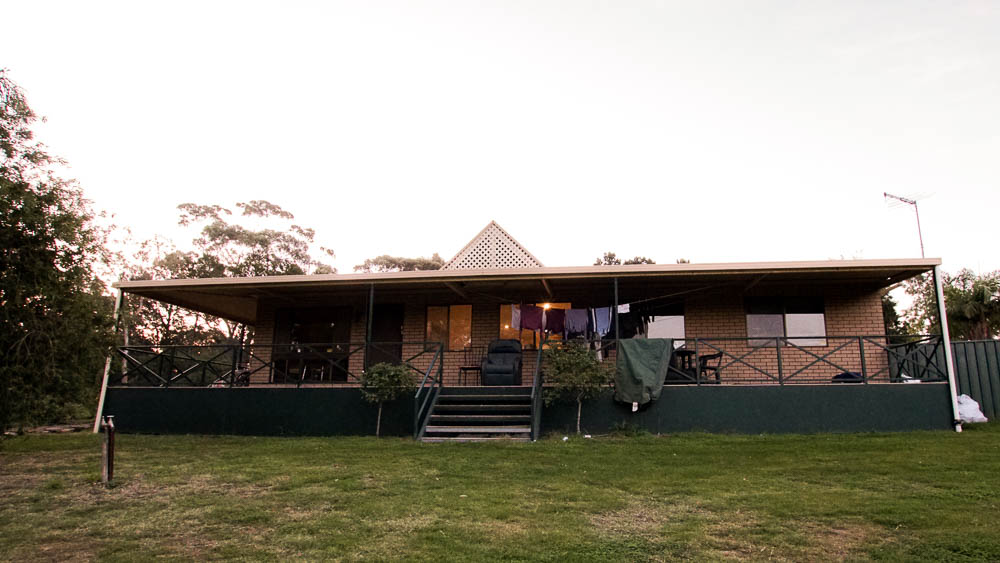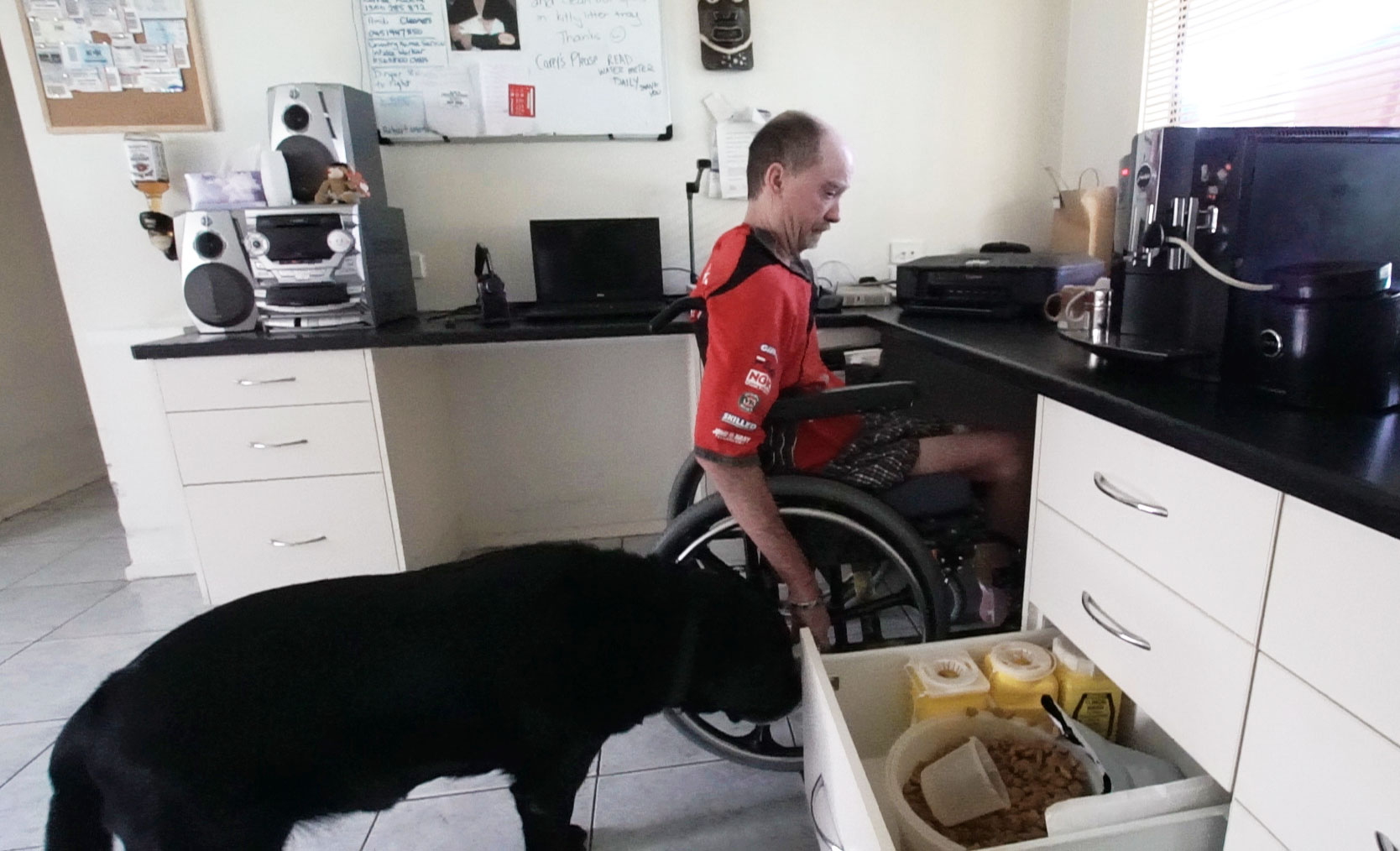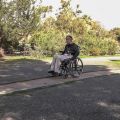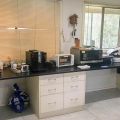Stephen, Living Blind And Free In The Country
Overview:
At the age of 33, Stephen was diagnosed with Primary Progressive Multiple Sclerosis. Now age 45, Steven is blind, uses a wheelchair and has 50% use of his left arm. Despite all of these challenges, Stephen was determined to stay in his home in the country. Stephen says that good design, technology, routine and practice, combined with motivation and courage are the key ingredients to his independence.

Key Features:
2 bedrooms
Large living spaces
Country setting
Accessibility and Inclusion Features:
Accessible kitchen
Lowered light switches
Wheelchair accessible pathways
Custom accessible design
Details:
Country Life
Stephen awknowledges that life may be easier if he moved to the city, but he was a country person before his illness and he remains a country person after his illness. He says he doesn't think he'd cope with the sound of cars and sirens going down the street. Besides, he loves to play his music so loud that the whole house shakes. He most likely would not be able to get away with this in the city.
"My vision is gone, but my ears work fine," Stephen smiles. "Might as well make the most of this sense."
Routine Gives Freedom
For Stephen, routine is integral for independence. His routine starts the moment he wakes up. He spends about 10 minutes getting himself out of bed. He uses a pole that is mounted to the side of the bed frame for support to transfer into his wheelchair. His wheelchair has to be in the exact position, which he lines up the night before when getting into bed. A support worker makes the bed each day in a specific way so that the blankets will not get in the way when he gets in and out of bed.
He transfers in and out of bed independently with multiple safety measures in place. He wears a medical alert pendant around his neck. He has a voice activated mobile phone on his bedside table, and he has the house phone under his wheelchair. These safety measures give Stephen the confidence to keep transferring independently. He knows he can get assistance if something goes wrong.
The photos on this page are interactive. When you hover your mouse, or finger if using a touch screen, over the photos, points of interest will appear. Hover on these points to learn more about the specific accessibility features that help make this house great.

Having Pets
Guide Dogs SA recommended that Stephen get a lab because they make great companions and are easy to look after. Koby, Stephen's dog, has certainly lived up to this reputation. Koby loves to follow Stephen around thoughout the day, and often sits at his side. Stephen orders Koby's food through guide dogs SA, which makes it very easy to organise.

"The Support Worker Is Part Of My Independence"
A support worker is there for 2 1/2 hours in the morning. They make sure the coffee machine is full, they make Stephen's bed and they assist him with a bit of his personal care. They also set up his fridge so that he has a ready made lunch and all the ingredients ready for dinner, which he will cook later.
"The support worker is part of my independence," Stephen explains. "They set me up so that I can function the rest of the day without chaos."
Cooking by feel, Sound and Smell
A coffee machine, an optic grill, a microwave steamer and an air fryer make up Stephen's kitchen arsenal. Initially a support worker helped teach him how to use this equipment, but now Stephen steams his vegetables, grills his steak and air fries his fresh potato chips totally unassisted. The buttons on Stephen's kitchen hardware are raised with a tactile marking paint, which he purchased from the Royal Society of the Blind. This helps him locate and distinguish between the different buttons.
Feel, sound and smell are integral to cooking without vision. Stephen says he does occasionally burn himself, but that doesn't stop him from cooking. He enjoys the challenge and most importantly, he enjoys eating good, healthy, home-cooked meals.

"I Can Do Anything On A Computer That A Sighted Person Can Do"
Learning to use the computer blind was a big challenge, but it was totally worth pursuing. Stephen says the computer is his lifeline that connects him to the world.
"I can do anything on a computer that a sighted person can do," asserts Stephen. He regularly emails, surfs the web and chats with friends on facebook. The Royal Society for the Blind has been integral in this learning journey. They helped Stephen get set up and trained to use equipment substitution software that allows Stephen to use his computer by sound rather than sight.

Custom Designed Accessible Pathway
Stephen's brother in law came up with the idea of putting small metal rails along a paved path leading between Stephen's house and his studio in the back yard. Stephen can tell whether he is on the path by the sensation and feel of the rails on his wheelchair. Before the rails were added, Stephen had to rely on someone to take him on the path. Now he is free to get outdoors by himself. Stephen hopes to one day be able to extend this path so he can go further.






